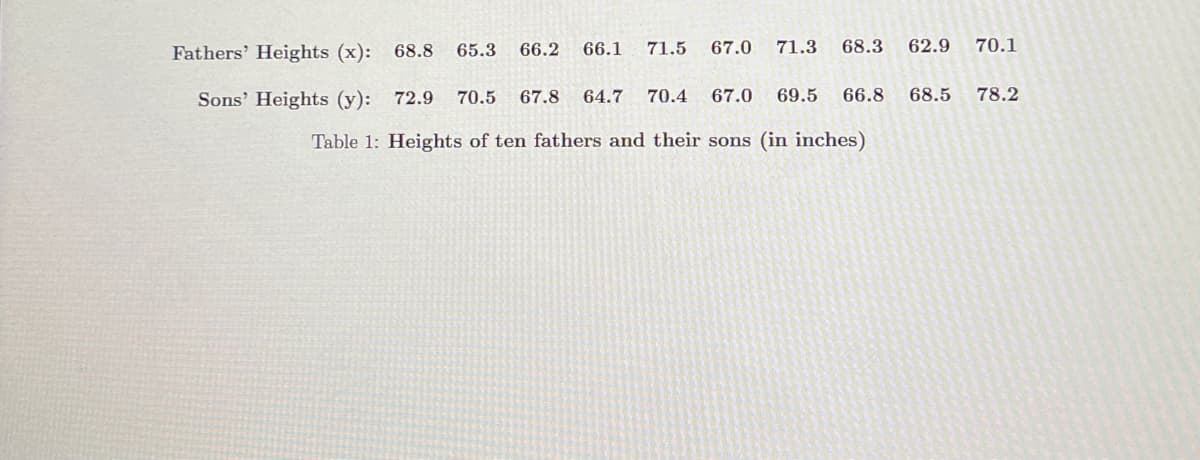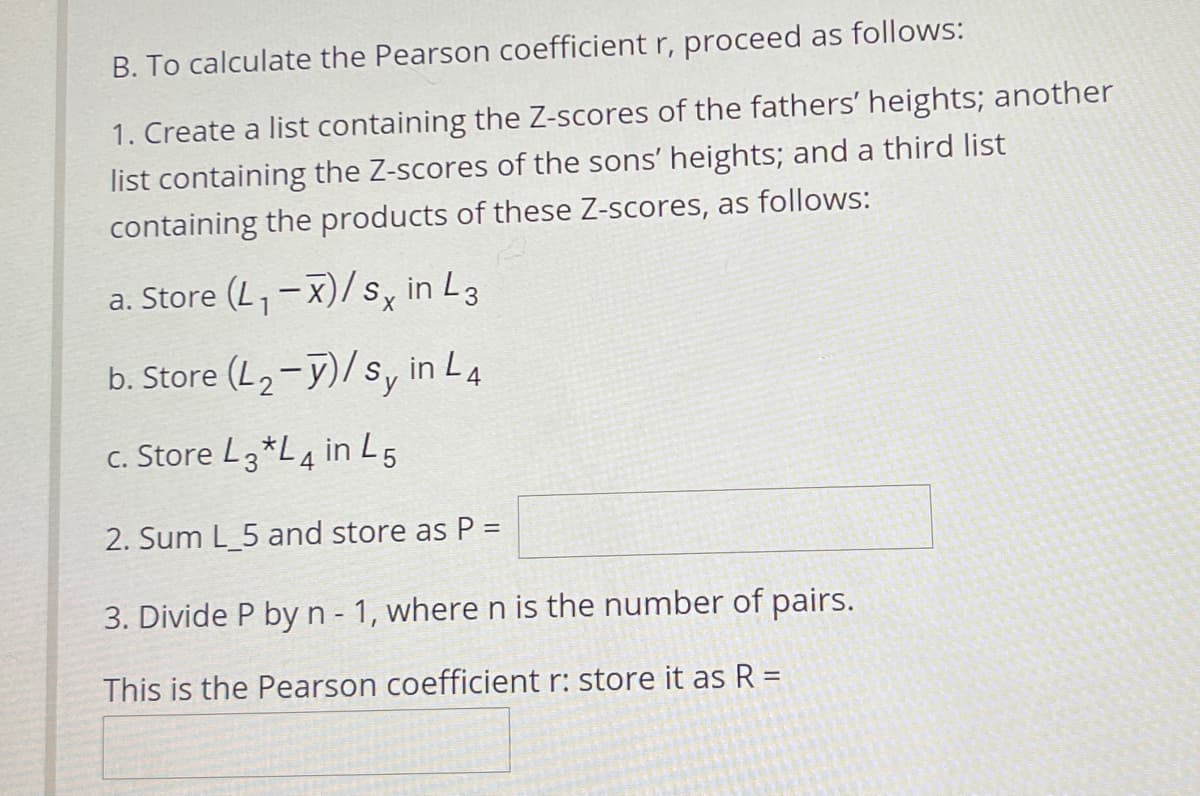B. To calculate the Pearson coefficient r, proceed as follows: 1. Create a list containing the Z-scores of the fathers' heights; another list containing the Z-scores of the sons' heights; and a third list containing the products of these Z-scores, as follows: a. Store (L,-X)/s, in L3 b. Store (L,-y)/s, in L4 c. Store L3*L4 in L5 2. Sum L_5 and store as P = 3. Divide P by n - 1, where n is the number of pairs. This is the Pearson coefficient r: store it as R =
B. To calculate the Pearson coefficient r, proceed as follows: 1. Create a list containing the Z-scores of the fathers' heights; another list containing the Z-scores of the sons' heights; and a third list containing the products of these Z-scores, as follows: a. Store (L,-X)/s, in L3 b. Store (L,-y)/s, in L4 c. Store L3*L4 in L5 2. Sum L_5 and store as P = 3. Divide P by n - 1, where n is the number of pairs. This is the Pearson coefficient r: store it as R =
Algebra & Trigonometry with Analytic Geometry
13th Edition
ISBN:9781133382119
Author:Swokowski
Publisher:Swokowski
Chapter5: Inverse, Exponential, And Logarithmic Functions
Section5.6: Exponential And Logarithmic Equations
Problem 64E
Related questions
Topic Video
Question
Solve these 3 questions please using the data table below

Transcribed Image Text:Fathers' Heights (x):
68.8
65.3
66.2
66.1
71.5
67.0
71.3
68.3
62.9
70.1
Sons' Heights (y): 72.9
70.5
67.8
64.7
70.4
67.0
69.5
66.8
68.5
78.2
Table 1: Heights of ten fathers and their sons (in inches)

Transcribed Image Text:B. To calculate the Pearson coefficient r, proceed as follows:
1. Create a list containing the Z-scores of the fathers' heights; another
list containing the Z-scores of the sons' heights; and a third list
containing the products of these Z-scores, as follows:
a. Store (L,-x)/s, in L3
b. Store (L2-y)/s, in L4
c. Store L3*L4 in L5
2. Sum L_5 and store as P =
3. Divide P by n - 1, where n is the number of pairs.
This is the Pearson coefficient r: store it as R =
Expert Solution
This question has been solved!
Explore an expertly crafted, step-by-step solution for a thorough understanding of key concepts.
Step by step
Solved in 2 steps with 2 images

Knowledge Booster
Learn more about
Need a deep-dive on the concept behind this application? Look no further. Learn more about this topic, statistics and related others by exploring similar questions and additional content below.Recommended textbooks for you

Algebra & Trigonometry with Analytic Geometry
Algebra
ISBN:
9781133382119
Author:
Swokowski
Publisher:
Cengage

Functions and Change: A Modeling Approach to Coll…
Algebra
ISBN:
9781337111348
Author:
Bruce Crauder, Benny Evans, Alan Noell
Publisher:
Cengage Learning

Algebra & Trigonometry with Analytic Geometry
Algebra
ISBN:
9781133382119
Author:
Swokowski
Publisher:
Cengage

Functions and Change: A Modeling Approach to Coll…
Algebra
ISBN:
9781337111348
Author:
Bruce Crauder, Benny Evans, Alan Noell
Publisher:
Cengage Learning